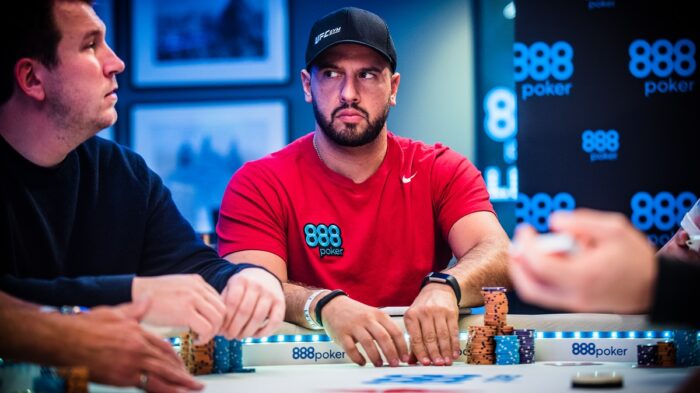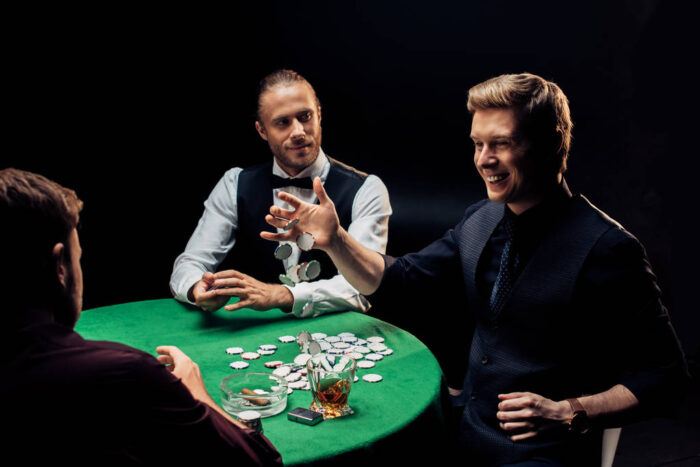Poker is a game that requires both skill and strategy, and being able to read your opponent’s body language can give you a significant advantage. In this handbook, we will discuss the basic body language gestures in poker, what gestures can reveal about an opponent, and how to interpret these gestures correctly. We will also cover how to use body language to your advantage, tips and recommendations for body language analysis in poker, the secrets of successful body language understanding, understanding the subtleties of body language, and how to apply body language analysis in poker in practice. And after reading this article you will be able to use your new knowledge to play poker. Want to know more? Go to https://conquestador-blog.com.
Basic Body Language Gestures in Poker

Source: 888poker.com
Before we dive into the specifics of body language in poker, it’s essential to have a basic understanding of some common gestures. These include:
- Eye contact: This is one of the most important forms of nonverbal communication in poker. Players who avoid eye contact may be trying to hide something, while those who make prolonged eye contact may be trying to intimidate or bluff their opponents.
- Facial expressions: A person’s facial expressions can reveal a lot about their emotions and state of mind. A player who is nervous or anxious may have a tense, tight-lipped expression, while a confident player may have a relaxed and carefree expression.
- Hand movements: Hand movements such as shaking or fidgeting can reveal a player’s nervousness or uncertainty, while stillness and calmness can show confidence.
- Posture: The way a player sits can reveal their level of comfort and confidence. A slouching player may be feeling defeated or unsure, while an upright player may be feeling more confident.
- Breathing: Rapid, shallow breathing can indicate nervousness or excitement, while slow, deep breathing can suggest calmness and relaxation.
What Gestures Can Reveal an Opponent

Source: youtube.com
When playing poker players are always trying to conceal their true thoughts and intentions. However, there are certain body language gestures that can reveal an opponent’s thoughts and emotions. Here are a few examples:
- Avoiding Eye Contact: Players who avoid eye contact may be trying to hide something, such as a weak hand or a bluff. Conversely, a player who makes prolonged eye contact may be trying to intimidate their opponents or bluff them into thinking they have a strong hand.
- Twitching or Fidgeting: Players who twitch or fidget may be nervous or unsure about their hand. This can be a sign that they have a weak hand or are uncertain about their next move.
- Clenched Jaw: A player who has a clenched jaw may be feeling stressed or anxious. This can be a sign that they are unsure about their hand or that they are not comfortable with the current situation.
- Heavy Breathing: Rapid, shallow breathing can indicate nervousness or excitement, while slow, deep breathing can suggest calmness and relaxation. A player who is breathing heavily may be feeling stressed or anxious about the current situation.
- Exaggerated Gestures: Players who make exaggerated gestures may be trying to deceive their opponents. For example, a player who makes a big show of checking their cards may be trying to make their opponents think they have a strong hand.
How to Interpret Your Opponent’s Gestures Correctly
Interpreting your opponent’s body language correctly can give you a significant advantage in casino poker. However, it’s essential to remember that body language is not always an accurate indicator of a player’s thoughts or intentions. Here are a few tips for interpreting your opponent’s gestures correctly:
- Look for clusters of gestures: A single gesture may not be an accurate indicator of your opponent’s thoughts or intentions. Instead, look for clusters of gestures that suggest a particular emotion or state of mind.
- Consider the context: it can be influenced by a variety of factors, including the current situation, the player’s personality, and their playing style. Consider these factors when interpreting your opponent’s body language.
- Be aware of your own biases: It’s easy to fall into the trap of interpreting your opponent’s body language based on your own biases and preconceptions. Be aware of these biases and try to interpret your opponent’s gestures objectively.
- Confirm your interpretation: If you think you have interpreted your opponent’s body language correctly, confirm your interpretation by observing their behavior over the next few hands. If their behavior is consistent with your interpretation, you can be more confident in your assessment.
How to Use Body Language to Your Advantage

Source: casinogamefactory.com
Being able to read your opponent’s body language is only half the battle in a casino. The other half is knowing how to use this information to your advantage. Here are a few tips for using body language to your advantage:
- Bluff with confidence: If you have a weak hand but are confident in your ability to bluff, use confident body language gestures to convince your opponents that you have a strong hand.
- Avoid giving away too much: Be aware of your own body language and try to avoid giving away too much information about your hand or your thoughts.
- Use your opponent’s body language against them: If you notice that your opponent is nervous or anxious, use this to your advantage by making a bold move that will put them under even more pressure.
- Stay calm and collected: If you are feeling nervous or uncertain, try to maintain a calm and collected demeanor. This will make it more difficult for your opponents to read your body language and gain an advantage.
Body Language Analysis in Poker: Tips and Recommendations
Here are a few additional tips and recommendations for body language analysis in casino poker:
- Watch the other players: Even if you’re not in the hand, watch the other players and try to observe their body language. This will give you a better understanding of their playing style and help you predict their behavior in future hands.
- Practice observing body language: The more you practice observing body language, the easier it will become. Try to observe people’s body language in everyday situations to improve your skills.
- Be patient: Interpreting body language takes time and practice. Be patient and persistent, and don’t get discouraged if you make mistakes.
- Combine body language with other information: Body language should be used in conjunction with other information, such as the player’s betting patterns and the cards on the table.
Secrets of Successful Body Language Understanding in Poker

Source: create.vista.com
Successful body language understanding in poker requires a combination of observation, intuition, and strategy. Here are a few secrets to successful body language understanding in casino Japan poker:
- Pay attention to the details: Successful body language understanding requires a keen eye for detail. Pay attention to the small gestures and subtle nuances that can reveal an opponent’s thoughts and intentions.
- Be adaptable: Every player is different, and what works for one opponent may not work for another. Be adaptable and adjust your strategy based on the individual players you are facing.
- Don’t rely on body language alone: Body language should be used in conjunction with other information, such as the player’s betting patterns and the cards on the table.
- Stay focused: Successful body language understanding requires intense focus and concentration. Avoid distractions and stay focused on the game at hand.
Understanding the Subtleties of Body Language in Poker
Body language in poker is not always straightforward. There are often subtle nuances that can be difficult to interpret. Here are a few examples of the subtleties of body language in poker:
- The timing of gestures: The timing of a player’s gestures can reveal a lot about their intentions. For example, a player who hesitates before making a bet may be unsure about their hand, while a player who acts quickly may be confident in their hand.
- The direction of eye movements: The direction of a player’s eye movements can reveal where their attention is focused. For example, a player who looks at their chips may be planning to make a bet, while a player who looks at the cards on the table may be trying to calculate the odds.
- Micro-expressions: Micro-expressions are brief facial expressions that reveal a person’s true emotions. These can be difficult to spot, but they can reveal a lot about an opponent’s thoughts and intentions.
- Changes in breathing: Changes in a player’s breathing patterns can reveal their level of stress or anxiety. For example, a player who takes a deep breath before making a bet may be feeling nervous.
In conclusion, understanding body language in poker can give you a significant advantage in the game. By observing your opponents’ gestures, interpreting them correctly, and using this information to your advantage, you can improve your chances of winning. Remember to be patient, persistent, and adaptable, and don’t rely on body language alone. Combine your knowledge of body language with other information to make informed decisions and improve your overall poker strategy.
